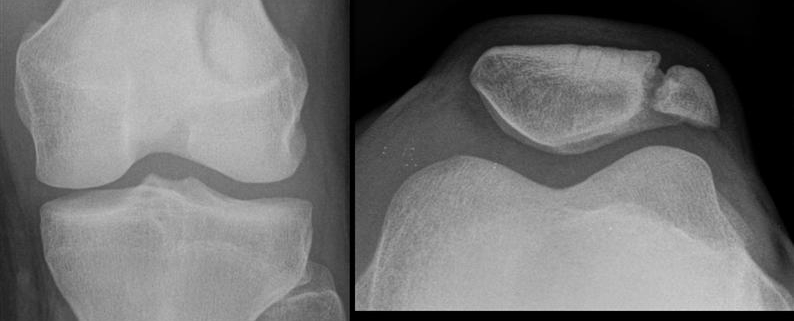
Bipartite Patella
Overview
Bipartite patella is a condition that arises from a developmental irregularity in the kneecap. It’s characterized by the patella, also known as the kneecap, being split into two distinct parts, rather than forming a single, solid bone. It’s relatively scarce, affecting only about 1-2% of the general population. Despite its rarity, it’s crucial to understand bipartite patella as it can sometimes cause knee pain and discomfort.
Types
Bipartite patella is usually classified into three types based on the location of the split in the kneecap. These are:
- Type I: Occurs in the inferior or bottom edge of the kneecap.
- Type II: Affects the lateral or outer edge of the kneecap.
- Type III: Involves the superior or top edge of the kneecap. This type is the most common.
Causes
Bipartite patella is caused by an irregularity during the developmental stage. Normally, the patella starts as separate bones that eventually fuse to form one bone as individuals reach adolescence. In bipartite patella, these separate fragments don’t completely unite, leading to a split or ‘two-part’ kneecap. This condition is generally thought to be congenital, meaning that people are born with it.
Symptoms
Many individuals with bipartite patella don’t experience any symptoms. The condition often goes unnoticed and may be discovered incidentally during a knee X-ray for another issue. However, some people may experience:
- Knee pain, particularly while engaging in physical activities.
- Swelling or tenderness around the kneecap.
- Visible lump on the kneecap.
- Limited range of motion in the knee.
Diagnosis
The diagnosis of bipartite patella primarily involves radiological exams. Doctors often:
- Conduct physical examinations to assess the knee for pain, swelling, or visible abnormalities.
- Order imaging tests, such as X-rays, computed tomography (CT) scans, or magnetic resonance imaging (MRI) to visualize the kneecap’s structure.
The distinctive two-part appearance of the kneecap on these images will usually confirm the diagnosis.
Treatment Options
Treatment for bipartite patella largely depends on whether the condition is causing symptoms. For those without symptoms, no treatment is needed. However, if symptoms manifest, treatment options may include:
- Pain management: Over-the-counter pain relievers, like ibuprofen, can help alleviate discomfort.
- Physical therapy: Exercises that strengthen the thigh muscles can support the knee and minimize pain.
- Rest: Restricting physical activities, particularly those causing knee pain, can facilitate recovery.
- Surgery: If conservative treatments are unsuccessful, surgery may be required to join the two portions of the kneecap or remove the smaller fragment(s).
Living With Bipartite Patella
Living with bipartite patella, particularly when symptoms are present, can be challenging but manageable. Here are some tips to help manage the condition:
- Engage in low-impact physical activities and exercises recommended by your physical therapist.
- Maintain a healthy lifestyle. Control your weight to avoid extra pressure on your knee joint.
- Take over-the-counter medications as directed by your doctor to mitigate pain.
- Wear knee supports or braces if recommended by your doctor to provide additional stability.
When to Seek Help
If you experience persistent knee pain, swelling, redness, or difficulty moving your knee, it’s essential to seek medical attention. These symptoms could be indicative of bipartite patella or other knee-related conditions. Additionally, if you’re already diagnosed with bipartite patella and your symptoms become worse or don’t improve despite treatment, please contact your healthcare provider.
